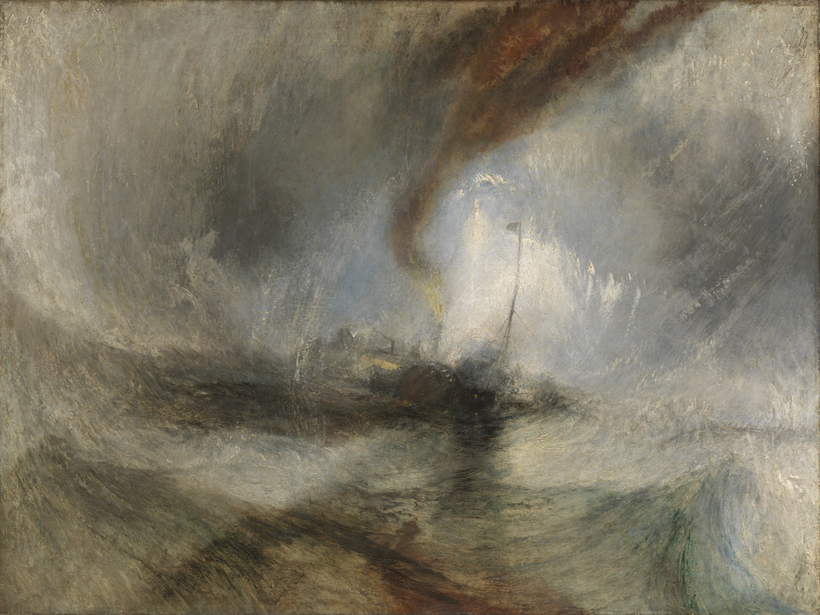In 1840, to witness the full force of nature’s tumult and beauty, the 65-year-old British painter Joseph Mallord William Turner had sailors lash him to a boat’s mast for four hours during a tempest. “I did not expect to escape,” Turner said, “but I felt bound to record it if I did.” Turner’s record is the momentous Snow Storm: Steam-Boat off a Harbour’s Mouth (1842)—a vertiginous whirlwind of streaking blacks, burnished ochers, glinting silvers, and pewter grays, with sensuous layers of opacity and translucence engulfing the boat, its bright white sail clawed nearly to oblivion. John Ruskin called the oil painting “one of the very grandest statements of sea-motion, mist, and light that has ever been put on canvas, even by Turner.”
Snow Storm is among approximately 75 oils, watercolors, and sketches in “J. M. W. Turner: Quest for the Sublime,” a formidable gathering of violent yet serene landscapes and seascapes, battle scenes and disasters—historical, mythological, and religious—by the visionary artist who dissolved the world into emotion and light. Organized by David Blayney Brown at Tate Britain, the show makes its only U.S. appearance at Nashville’s Frist Art Museum.
“I did not expect to escape,” Turner said, “but I felt bound to record it if I did.”
A leading Romantic and a groundbreaking figure for the later Impressionists and Expressionists, Turner is in our bones. He didn’t paint or interpret but wrestled with, ravished, and atomized his motifs. Turner’s mysterious and dynamic distillations of nature bridged the old masters to the modern masters. His swirling, nearly abstract brushwork opened doors for Monet, Van Gogh, Kandinsky, Soutine, and Pollock. And his virtuosic, sometimes shocking displays of public painting at the Royal Academy of Art on varnishing days—when artists touched up and finalized their pictures the day before an exhibition’s opening—locate him among the first performance artists.
If you’ve never experienced Turner en masse—it’s like being lashed to the mast at the center of his maelstrom, simultaneously enveloped in heaven’s golden light and bombarded by hellish fury—then let this show be your trial by fire. “He is a madman,” a critic scoffed—not because of Turner’s subjects but because of his impassioned interpretation and explosive attack. How true. His madness is our madness. Turner, among the first to express the world through contemporary eyes, is the father of us all. —Lance Esplund

